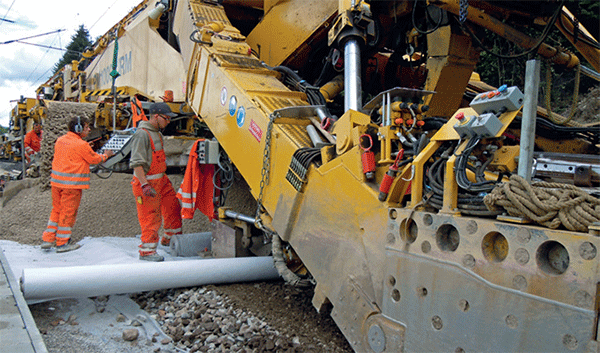 |
The area around Bodegraven consists of soft peat soil, which has subsided in various places. To reinforce the soil and carry out repairs to this section of the track, ProRail used the largest railway machine in Europe. This track layer is more than 1200 meters long. The train lifts the rails up over a distance of one kilometer and excavates the existing subsoil in three layers, which may be as much as six meters deep. The soil that is removed is immediately cleaned, sieved and—as happened near Bodegraven—placed on top of the TenCate Polyfelt® geotextile, which had already been automatically installed. This separation material received special certification by ProRail for use under the ballast bed. At the same time, wooden sleepers were replaced with concrete ones. In the past couple of years more than 500,000 m2 of TenCate Polyfelt® and TenCate Polyfelt® Geolon filtration fabric have been installed during similar work.
The work in Bodegraven attracted a great deal of attention: trainspotters and other people who were interested came to take a look at the longest train ever.
This article was first published in TenCate’s txtures magazine. It is republished here by permission: email geosynthetics.europe@tencate.com, website www.tencategeosynthetics.com. Geosynthetica’s "View from…" series showcases photographs and project notes from around the world. Share your work with the geo-engineering community. Contact the editor, Chris Kelsey, at chris@geosynthetica.net.











